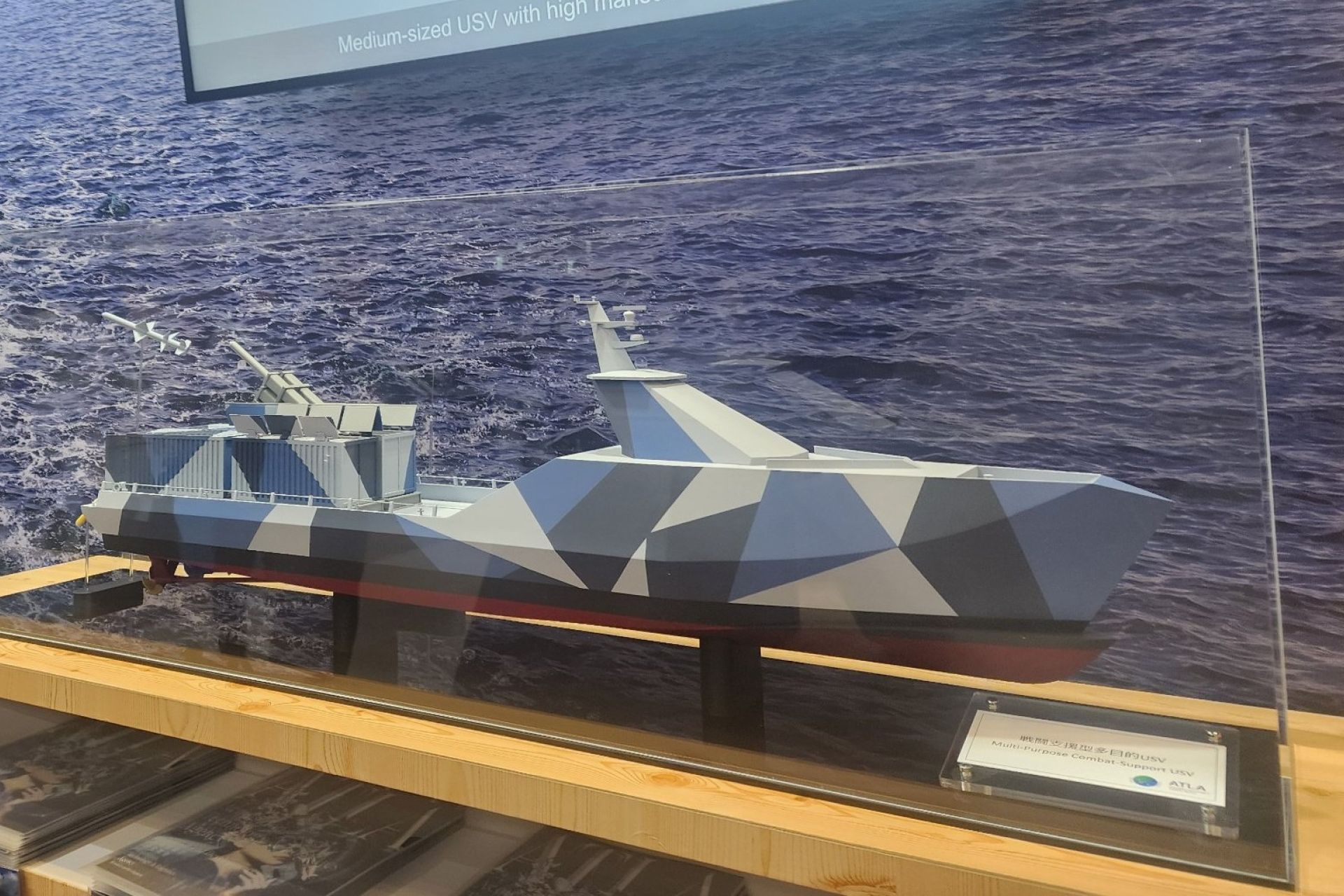Breaking News
Japanese Navy Advances with AI-Driven Uncrewed Surface Vehicle for Autonomous Operations.
On May 21, 2025, during the DSEI Japan exhibition in Chiba, Mitsubishi Heavy Industries (MHI), in partnership with Japan’s Acquisition, Technology & Logistics Agency (ATLA), revealed the development of a new AI-enabled uncrewed surface vehicle (USV) designed for multipurpose combat support. Positioned within the broader defense strategy of network-centric warfare and maritime unmanned systems, this USV introduces a transformative capability for the Japan Maritime Self-Defense Force (JMSDF), integrating high levels of autonomy, modular payloads, and persistent connectivity to enhance naval combat effectiveness.
Follow Army Recognition on Google News at this link

The AI-integrated Multipurpose Combat Support USV developed by Mitsubishi Heavy Industries and ATLA marks a decisive shift in Japan’s maritime defense posture, blending advanced autonomy, modular lethality, and real-time network warfare capabilities into a single platform (Picture source: ATLA)
This announcement represents a strategic milestone as Japan continues to accelerate the modernization and unmanned transformation of its naval assets in response to growing regional threats and operational demands.
The introduction of this multipurpose combat USV answers a growing imperative in maritime defense: the need for intelligent, modular, and collaborative systems capable of executing complex tasks in highly contested environments without placing human operators at risk. Equipped with advanced sensors including electro-optical/infrared cameras and radar systems, and leveraging artificial intelligence for real-time threat recognition and decision support, the USV is purpose-built to identify all types of naval threats. One of its most distinctive features lies in its reconfigurable aft deck, designed to accommodate modular containerized payloads, ranging from sea-to-air to sea-to-ground missile systems, making it adaptable for various mission profiles including anti-ship, air defense, and strike operations.
From a technical standpoint, the vessel is projected to reach up to 50 meters in length and is managed through MHI’s proprietary CoasTitan C2 system. This system enables coordinated control over fleets of unmanned surface, aerial, and underwater platforms. With permanent real-time connections to other USVs in its fleet, the vehicle operates as part of a distributed, data-sharing swarm. This configuration enhances tactical awareness, collective targeting, and redundancy against jamming or system failure. Moreover, the USV is capable of executing anti-submarine and underwater warfare missions through deployable systems such as torpedoes or unmanned underwater vehicles (UUVs), effectively adding a sub-surface dimension to its combat capabilities.
The operational roadmap for this platform builds on Japan's prior experience in unmanned maritime systems, notably MHI’s “Whale” USV. Initially a testbed for combined surface and underwater drone integration, the Whale provided the conceptual and technological foundation for the new combat USV. While no operational deployment has yet occurred, sea trials are anticipated by 2027, following an intensive design and integration phase launched under the Outrange Mine Countermeasure Operation initiative. This continuity in R&D highlights Japan’s long-term strategic investment in unmanned naval warfare, fostering a transition from mine countermeasures toward armed autonomous operations.
Compared to other advanced USVs such as the U.S. Navy’s Overlord program or Israel’s Seagull platform, the MHI-USV stands out through its containerized armament configuration, AI-based target classification, and seamless interoperability with peer USVs. While U.S. platforms emphasize persistent ISR and logistics support, Japan’s design offers an organic strike and underwater warfare capability from a single modular hull. It also diverges from historical development patterns by merging conventional destroyer-class functions with scalable autonomy, thus creating a hybrid force multiplier rather than a complementary scout or decoy vessel.
The strategic implications of this system are considerable for regional and global security dynamics. Deployed alongside JMSDF destroyers, the USV enhances distributed lethality, reduces risk to crewed vessels, and increases endurance during high-intensity conflict scenarios, particularly in the East China Sea and Pacific theater. The persistent connectivity and real-time data exchange with peer vessels promote tactical coordination, while the platform’s container-based missile options allow Japan to rapidly reorient its naval force posture according to threat assessments. Furthermore, as Japan deepens security ties with partners such as the United States and Australia, the USV could serve as a node within allied maritime data and command architectures, reinforcing multilateral deterrence.
The AI-integrated Multipurpose Combat Support USV developed by Mitsubishi Heavy Industries and ATLA marks a decisive shift in Japan’s maritime defense posture, blending advanced autonomy, modular lethality, and real-time network warfare capabilities into a single platform. As threats evolve and unmanned technologies become central to naval doctrines, this new USV reflects Japan’s strategic ambition to maintain technological superiority and operational agility across multiple maritime domains. With its eye on 2027 for initial trials, the program sets the stage for a broader transformation of naval combat dynamics in the Indo-Pacific and beyond.


























